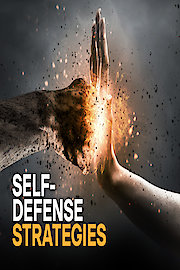
























Understanding and Applying Self-Defense Strategies is a comprehensive introduction to self-defense, and will change the way you look at the world and think about yourself. Taught by an acclaimed self-defense instructor, Krav Maga expert, and psychotherapist, these 24 interactive lessons give you an arsenal of physical and mental strategies to prepare you to defend yourself and your loved ones.
Understanding and Applying Self-Defense Strategies is a series that ran for 1 seasons (24 episodes) between March 6, 2025 and on The Great Courses
-
Channel
-
Premiere DateMarch 6, 2025

-
 MyFreeDIRECTV is a new free premium TV experience.
MyFreeDIRECTV is a new free premium TV experience.
-
 Enjoy a curated selection of popular free live channels and On Demand library.
Enjoy a curated selection of popular free live channels and On Demand library.
-
 Try the DIRECTV experience - All you need is the DIRECTV app.
Try the DIRECTV experience - All you need is the DIRECTV app.

 MyFreeDIRECTV is a new free premium TV experience.
MyFreeDIRECTV is a new free premium TV experience.
 Enjoy a curated selection of popular free live channels and On Demand library.
Enjoy a curated selection of popular free live channels and On Demand library.
 Try the DIRECTV experience - All you need is the DIRECTV app.
Try the DIRECTV experience - All you need is the DIRECTV app.


























